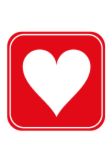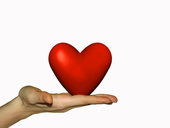|
|
 |
Learning CPR and First Aid can mean the difference of life or death for someone you know and love.
- Approximately 80% of all cardiac arrest happen at home.
- 90% of sudden cardiac arrest victims die before reaching the hospital.
- Immediate CPR can double a victim's chance of survival.
Lifeline CPR offers a variety of safety topics and flexible appointments that can be tailored to meet individual and group needs. Heartsaver classes are designed for people with no medical training needing to obtain a course completion card to satisfy occupational requirements. Family and Friends trainings are designed for anyone wanting to learn CPR and first aid for personal knowledge and gain. Students taking Family and Friends classes will receive a course participation card. Lifeline courses follow the American Heart Association's New 2010 CPR and ECC Guidelines.
© Heartsaver Trainings (credential card):
o CPR
o First Aid
o Pediatric First Aid
o AED
© Family and Friends Trainings (participation card):
o CPR
o First Aid for Children
© Health provider (BLS)
© Bloodborne Pathogens
Course-specific information can be found throughout the Lifeline CPR website.
Are you ready to learn to save a life?
Lifeline CPR
(817)675-3611
5424 Truman Drive
Fort Worth, TX 76114
CPRvoice@gmail.com
www.LifeLineCPR4Life.com

CPR and First Aid can benefit:
- Health and Fitness facilities such as trainers, instructors
- Hospitality Industry such as restaurants, clubs, hotels
- Retail such as malls, shopping centers, retail stores, convenient stores
- Recreation & Entertainment such as movies, bowling alleys, theme parks, pools, museums, roller rinks, convention centers, arenas
- Youth Organizations such as sports, scouts, clubs, church groups, gyms, recreational centers
- Youth Care & Education such as teachers, coaches, substitutes, social workers, foster parents, PTA volunteers, tutors, principals, directors, adoptive families, councilors
- Public Service such as post office, library, public transportation, airports
- Constructions Industry such as foreman, crew chief, site managers, crew
- Warehouses, drilling sites, construction sites
- Office and Business Industry such as receptionist, secretary, managers, supervisors, salesperson, clerks
- Healthcare - doctor, nurses, physician's assistant, medical assistance, technicians
- Dentist, hygenist, lab technicians
- Firemen, police, EMT, paramedic
- Security gaurds and MERT members (Medical Emergency Response Team), anyone expected to respond while on the job
- Home healthcare providers
|

CPR Facts
LifeLine CPR (817)675-3611 lifelinecpr4life@gmail.com
- When someone needs CPR, ANY CPR IS BETTER THAN NO CPR, without it a victim’s chances of survival fall 7-10% every minute they go with CPR and defibrillation. (AHA)
- Every 34 seconds someone dies from heart and blood vessel disease. America's #1 killer (AHA)
- More than 90% of deaths from choking occur in children under 5 years of age. 65% are infants. (AHA Pediatric First Aid)
- Bicycle crashes are responsible for approximately 200,000 injuries and nearly 150 deaths per year. (AHA First Aid)
- Vehicle crashes account for nearly 1/2 of all pediatric deaths in the U.S. (AHA Pediatric First Aid)
- Drowning is the 2nd major cause of unintentional deaths in children under 5 years of age.
- The outcome of a drowning depends on how long victim was under water, how cold the water is and how quickly CPR is started.
- Oxygen rich blood must reach the bodies vital organs within 5 minutes or systems will begin to fail.
- Begin the Chain of Survival -call 911 and begin CPR, so you can double a victim’s chances to survive.
|
CPR Facts
|
CPR & Sudden Cardiac Arrest (SCA)
Fact Sheet
As of April 26, 2020
Sudden Cardiac Arrest
• EMS treats nearly 300,000 victims of out-of-hospital cardiac arrest each year in the U.S.
• Less than eight percent of people who suffer cardiac arrest outside the hospital survive.
• Sudden cardiac arrest can happen to anyone at any time. Many victims appear healthy with no known heart disease or other risk factors.
• Sudden cardiac arrest is not the same as a heart attack. Sudden cardiac arrest occurs when electrical impulses in the heart become rapid or chaotic, which causes the heart to suddenly stop beating. A heart attack occurs when the blood supply to part of the heart muscle is blocked. A heart attack may cause cardiac arrest.
Cardiopulmonary Resuscitation (CPR)
• Less than one-third of out-of-hospital sudden cardiac arrest victims receive bystander CPR.
• Effective bystander CPR, provided immediately after sudden cardiac arrest, can double or triple a victim’s chance of survival.
• The American Heart Association trains more than 12 million people in CPR annually, including healthcare professionals and the general public.
• The most effective rate for chest compressions is 100 compressions per minute – the same rhythm as the beat of the BeeGee’s song, “Stayin’ Alive.”
Automated External Defibrillators (AEDs)
• Unless CPR and defibrillation are provided within minutes of collapse, few attempts at resuscitation are successful.
• Even if CPR is performed, defibrillation with an AED is required to stop the abnormal rhythm and restore a normal heart rhythm.
• New technology has made AEDs simple and user-friendly. Clear audio and visual cues tell users what to do when using an AED and coach people through CPR. A shock is delivered only if the victim needs it.
• AEDs are now widely available in public places such as schools, airports and workplaces.
Teens/Youth
• About 5,800 children 18 years old and under suffer out-of-hospital cardiac arrest each year from all causes – including trauma, cardiovascular causes and sudden infant death syndrome.
• The incidence of out-of-hospital sudden cardiac arrest in high school athletes ranges from .28 to 1 death per 100,000 high school athletes annually in the U.S.
• The American Heart Association does not have a minimum age requirement for people to learn CPR. The ability to perform CPR is based more on body strength rather than age.
• Studies have shown that children as young as 9 years old can learn and retain CPR skills.
* AHA website, heart.org, under CPR Facts
|
|
















